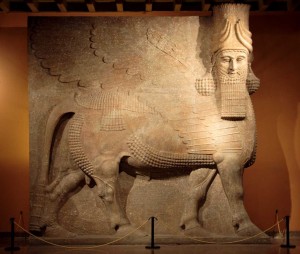GovernanceSharing-28xomai
EvolvingGovernanceTemplate-18liu8l
Great Canadian First Nations Resource
Evolving Ideas of Governance (1)-1qfpo1y
Preliminary Criteria for Investigating Ancient Civilizations2
Commenting on Essays
Read the essay of the person you were assigned to comment on.
a) Quote a part of the essay that you found particularly significant, and explain why you chose it.
b) Compare something that this person wrote with what you wrote.
• How are your pieces similar and/or different?
• What can you learn from these similarities or differences?
Mesopotamian Innovation Posters
- Charlie, Andrew, Aavash, Yahya
How did trade affect the rise of Mesopotamia?
- Tarini, Shaelyn, Katherine & Mika
How did law develop in the Fertile Crescent?
- Austin, Aaron, Amos, Miles
How Did Cuneiform (Writing) Advance Mesopotamian Culture?
- Yousef, Caspar, Kent
What Are the Mythologies That Informed Mesopotamian Culture?
- Maylee Thea, Lauren, Felwa
How did farming develop in Mesopotamia?
Map Interpretation Guidelines
1. Give this piece a descriptive & appropriate title.
2. Intro Paragraph
Explain the purpose of your map.
3. Body Paragraphs
Give specific examples of how geography & environment affected the development of culture in early Mesopotamia.
4. Conclusion
Pull together what you discovered and make a personal reflection.
Make a map that tells a story:
How the Environment Impacted the Growth of Civilization in the Fertile Crescent
- Read “Adapting the Environment” on pp. 70 & 71 of your textbook (You may also use internet resources.)
- On the map that is given to you, draw a visualization of how ancient Mesopotamians adapted their environment.
- Draw, colour, label & fineline a landscape to depict what these adaptations might have looked like. Remember to give your map a title as well.
- Make a map legend to clarify your map
- Summarize your findings in writing.
Environmental Aspects to Explore:
Water
Vegetation
Soil
Landforms
Climate
Animals
Some Map Links:
Vegetation Map
Topographical Map
Which Question Would You Like to Explore?
Criteria: anthropological-origin-of-humans
Class Questions About Human Origins
- Land Bridge?
- Why Africa?
- How did humanity evolve over time?
- Why are there different races?
- How did education affect human lives over time?
- How did languages develop?
- How did population expand?
- How was the world created?
- Why are we here?
- How were we created? When? Why?
- How were religions formed?
- Was everyone made for different reasons?
- How did humans start learning?
- How were names of things created?
- Why did Neanderthals die out?
- What w3as life like during the stone age?
- Why did monkeys start walking on 2 legs?
- How did we figure out what to eat?
- Where and how did humans start?
- How did humans start societies?
- How did humans find shelter?
- First human created?
Other Important Questions:
- What is evolution? How did humans evolve?
- What are the prehistoric time periods?
- How/when did humans first develop tools?
- How/when did humans first develop art
- How did humans first develop speech?
- Why did humans first leave Africa?
- How did humans spread to other continents?
- What does climate have to do with human evolution?
- Why do humans from different parts of the world look different?
- What happened to the Neanderthals?
How Am I Connected to the Past – Sample Outline
Paragraph 1 – Explain what you did in the project
Paragraph 2 – Describe an incident before your birth. How did it affect your life
Paragraph 3- Describe one of the world incidents on your timeline. How did it affect the present
Paragraph 4 – Sum up and make a reflective comment on how the past has affected your life.
Mesopotamia Wiki Page http://mesopotamia2015.wikispaces.com/ 1. Take notes, using pencil & paper 2. Keep a Word file to track your sources. It’s a good idea to use the bibliography template for your own information. 3. Collect images from Creative Commons. The link is on the home page of this Wiki. You may want to put them on your Wiki page immediately, and rearrange later. Make sure that your images have captions. 4. Write your article. 5. Link your sources to your article. You may want to link other items of interest as well.
Here are the guidelines for making your timeline: MesoTimeline EarlyHumansResearch EarlyHumansRubric BibliographyTemplate http://search.creativecommons.org/

